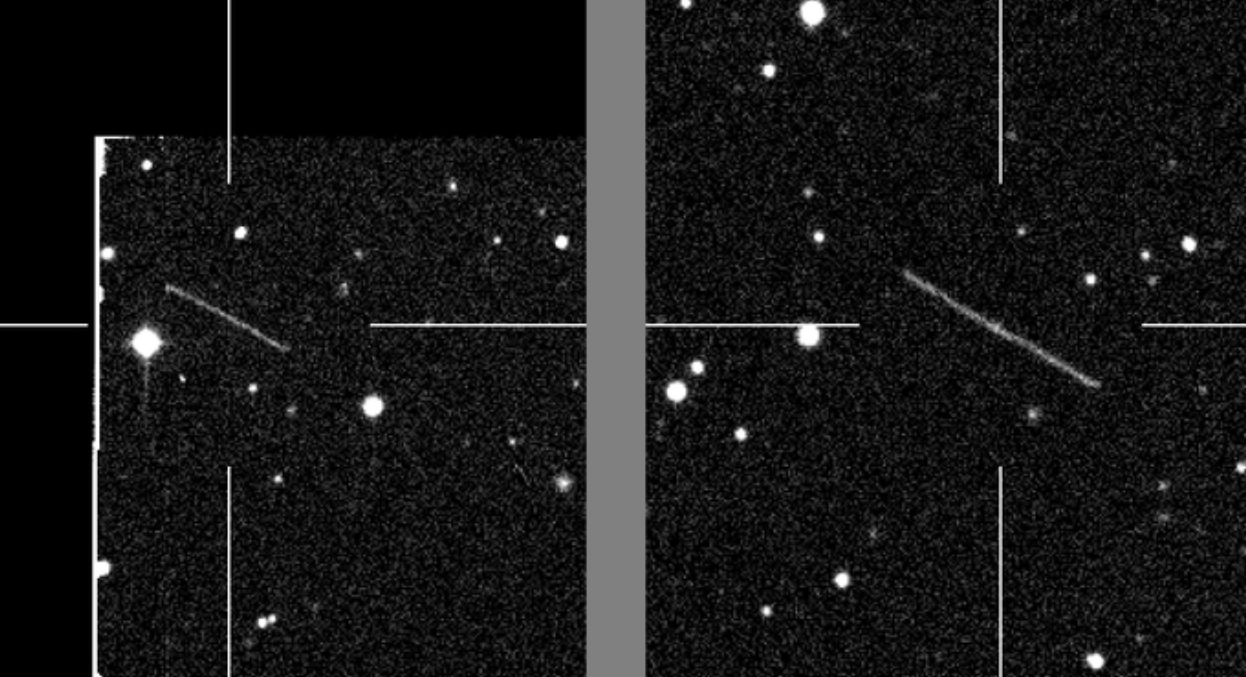
A small asteroid buzzed Earth Saturday (May 10), coming well within the orbit of the moon.
The near-Earth asteroid 2014 JG55 missed our planet by just 60,000 miles (96,560 kilometers), or about one-quarter of the distance between Earth and the moon. The flyby marked the third-closest asteroid near miss of 2014, researchers said.
The space rock was traveling about 22,000 mph (35,400 km/h) relative to Earth when it zipped past, they added.
The asteroid likely wouldn't have done much damage if it had struck Earth, however; it's too small. Scientists think 2014 JG55 — which was discovered on Saturday by the Palomar Transient Factory survey in southern California — is 10 to 26 feet (3 to 8 meters) wide.
That's about the same size as asteroid 2014 AA, the first new space rock discovered in 2014. The car-size 2014 AA was spotted on Jan. 1 and is thought to have crashed into Earth's atmosphere over the Atlantic Ocean just a few hours later.
About one billion asteroids the size of 2014 AA and 2014 JG55 cruise through Earth's neighborhood, researchers estimate. Just a tiny fraction of them have been detected to date. As of today (May 15), scientists have identified and catalogued about 10,950 near-Earth asteroids of all sizes.
The good news is that pretty much all of the potential civilization-enders — asteroids bigger than 0.6 miles (1 km) across — have been found, and none of them appear to pose any threat to Earth in the near future. But many other space rocks capable of devastating large areas of the planet remain undetected, cruising unnamed through the depths of space.
Get the Space.com Newsletter
Breaking space news, the latest updates on rocket launches, skywatching events and more!
And asteroids don't have to be behemoths to cause damage here on the ground. The space rock that detonated without warning above the Russian city of Chelyabinsk last year, for example, was likely just 65 feet (20 m) or so wide. The shockwave from the Russian meteor explosion shattered thousands of windows and injured about 1,500 people.
Follow Mike Wall on Twitter @michaeldwall and Google+. Follow us @Spacedotcom, Facebook or Google+. Originally published on Space.com.
Join our Space Forums to keep talking space on the latest missions, night sky and more! And if you have a news tip, correction or comment, let us know at: community@space.com.

Michael Wall is a Senior Space Writer with Space.com and joined the team in 2010. He primarily covers exoplanets, spaceflight and military space, but has been known to dabble in the space art beat. His book about the search for alien life, "Out There," was published on Nov. 13, 2018. Before becoming a science writer, Michael worked as a herpetologist and wildlife biologist. He has a Ph.D. in evolutionary biology from the University of Sydney, Australia, a bachelor's degree from the University of Arizona, and a graduate certificate in science writing from the University of California, Santa Cruz. To find out what his latest project is, you can follow Michael on Twitter.
